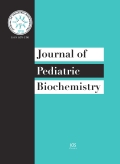Authors: Vitaliti, Giovanna | Lanzafame, Angela | Di Dio and, Giovanna | La Rosa, Mario
Article Type:
Research Article
Abstract:
The term "Allergy" actually includes a variety of different diseases (rhinitis, conjunctivitis, asthma, urticaria, and dermatitis) with a common pathological basis linked to the release of chemical mediators such as histamine, platelet-activating factor, arachidonic acid metabolites, and chemotactic factors secreted by mastocytes, basophils, and eosinophils. The key-role of leukotrienes (LTs) as mediators in allergic and inflammatory response justifies possible therapeutic use of leukotriene antagonists in other allergic diseases beyond asthma. LTs modifiers
…reduce asthma symptoms, short-acting beta2-antagonist (SABA) use, and asthma exacerbations, and improve all indexes of pulmonary function, as measured by the increases in forced expiratory flow at one second (FEV1), peak expiratory flow (PEF), quality of life, and indices of bronchial inflammation (blood eosinophils, inflammatory cells in the bronchial mucosa, exhaled nitric oxide, substance P, neurokinin A, eosinophil cationic protein, and serum myeloperoxidase). Anti-LTs have also been successfully used by some authors to control allergic diseases such as rhinitis, atopic dermatitis, chronic urticaria and allergic conjuncitivitis. Moreover, recently, new reports have been published concerning other conditions (migraine prophylaxis, sleep disorders, inflammatory bowel disease, and nasal polyposis) that broaden the future range of clinical applications. Topical ocular montelukast can be a potential therapeutic drug with a new route of administration that can be used for treatment of allergic conjunctivitis.
Show more
Keywords: Antileukotriene drugs, children, atopic diseases
DOI: 10.3233/JPB-130076
Citation: Journal of Pediatric Biochemistry,
vol. 3, no. 2, pp. 69-78, 2013
Price: EUR 27.50





